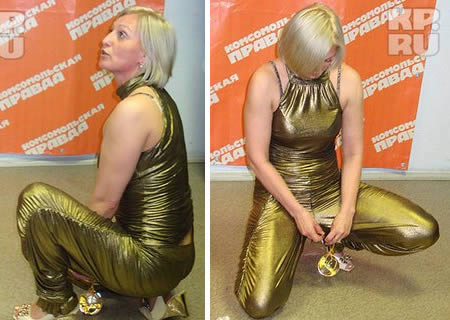
Ahh, the fabled “G-Spot”! Is it myth or reality. Wikipedia claims people have been asking this smae question since the 1940s! According to two different studies, it seems to just be a load of crap and all in your mind!
Back in January 2010 CNN Health (www.cnn.com) reported:
Researchers at King’s College London in the United Kingdom have brought the elusive G-spot to the forefront with a study of more than 1,800 female twins. The study suggests that there is no genetic basis for the G-spot and that environmental or psychological factors may contribute to whether a woman believes that she has a G-spot. The study also found correlations with personality components in women who did report having G-spots: For instance, these women tended to be more extroverted, arousable and open to experience, which may indicate a psychological component to the G-spot, Burri said.
January 2012 finds a new study questioning the validity of the G-Spot. An article from Yale University’s “Yale Daily News” states:
Yale urologist Amichai Kilchevsky published a study in the Jan. 12 issue of the Journal of Sexual Medicine suggesting that the fabled “G-spot,” the erogenous zone inside the vagina purported to provide intense pleasure during intercourse, does not exist.
To find evidence of the G-spot, Kilchevsky ran a search of published work between 1950 and 2011 using keywords like G-spot, Gräfenberg spot, female orgasm, female erogenous zone and others that are less safe for work.
“Objective measures have failed to provide strong and consistent evidence for the existence of an anatomical site that could be related to the famed G-spot,” Kilchevsky wrote.
Such objective measures, the study notes, have included everything from “digital stimulation” to MRI scans over the past decade. Kilchevsky notes that “modern investigative techniques” may provide more evidence in the future. The study claims the majority of women believe in the G-spot, which Kilchevsky said is thanks to a myth perpetuated by the porn industry and the public media.
“My view is that the G-spot is really just the extension of the clitoris on the inside of the vagina, analogous to the base of the male penis,” Kilchevsky said in the report.
But don’t be discouraged ladies because a study done in 2008 reported by Ian Sampler said it does exist.
Researchers at the University of L’Aquila have found, using ultrasonography, that women who experience vaginal orgasm are statistically more likely to have thicker tissue in the anterior vaginal wall. The researchers believe these findings make it possible for women to have a rapid test to confirm whether or not they have a G-Spot. A French study in late 2009 examined a small number of women with ultrasound as they had intercourse, by examining changes in the vagina they found physiological evidence of the G-Spot. The findings are under review by the “Journal of Sexual Medicine”.
Personally I think that if it’s just in your mind, or just the extension of the clitoris, or just thicker vaginal walls, it shouldn’t matter. What should matter is if you are able to orgasm at all, and do you get to as much as possible?




